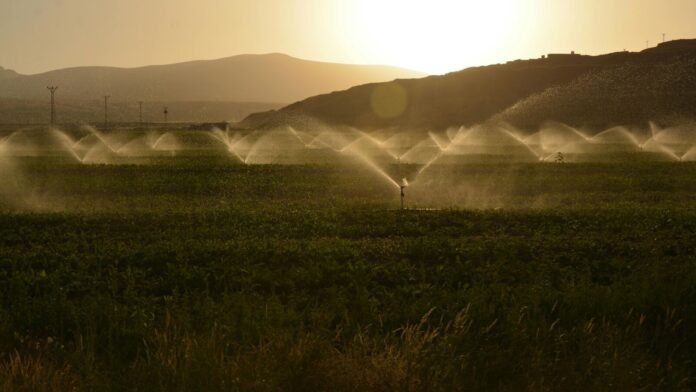The St. Mary River Irrigation District has upped its water allocation for the 2025 growing season, which will likely reduce some stress for agricultural producers.
General manager for the SMRID, David Westwood, says the allocation has been set at 12 inches per acre for 2025, up from the eight inches set at the start of last year’s season.
Westwood explains the annual amount determines how much water an irrigator can use per acre of irrigated land.
“If you can envision that over the entire growing season that per acre of irrigated land, that irrigator is putting on a cumulative 12 inches. So, if you can visually imagine a foot of water over the entire acre of land, that’s how much water that they are allowed to [use] or is allocated for that particular acre on that particular parcel,” he says.
“It’s for the entire growing season so as soon as they want to start irrigating, they can start using that allotment and over the entire growing season, they can irrigate up to a maximum of 12 inches.”
Westwood says compared to the tail end of the 2023 growing season, which saw drought conditions hit the region, the 2024 season brought more precipitation, allowing for the higher allotment.
“Thankfully throughout the last irrigation season, we received a lot of rain and precipitation and that allowed a lot of irrigators to have really great crops, even though we didn’t have a lot of irrigation to provide to them,” he states. “I think, the last year, we increased that starting [amount] from eight inches to nine inches in June, but that allowed them to finish off the season [with] good production and good yield.”
Westwood says there may be a chance the 12 inches will be increased as the season goes on, but that will depend on what Mother Nature has in store for the region.
“Snowpack is tracking very similar to what it was last year so [it’s] not great … but our storage going into this season is significantly improved and I would say we’re probably [at] about two-thirds additional storage compared to where we were last year,” he remarks.
Westwood adds the snowpack does not usually hit its peak until the end of April or early in May. “We could get some great snow on the mountains and that will obviously translate to some additional snow-water equivalent which potentially could allow us to release more allocation,” he says.
However, Westwood notes the SMRID believes the 12 inches is sufficient enough to reach the end of the growing season, which he says is around the second week of October.
“We feel we have enough supply in the system that we can adequately deliver that even if we were not to get [a lot of] precipitation in the summer.”
The St. Mary River Irrigation District boasts over 2,000 kilometres of canals and pipelines in southern Alberta, serving over 500,000 acres.







